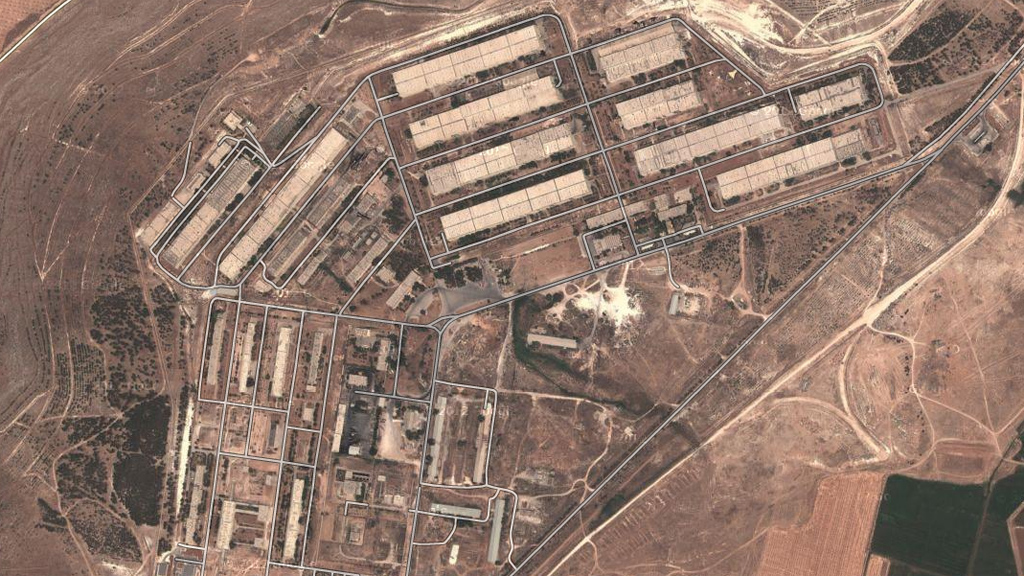Syria: the rebels battling for Assad’s chemical weapons
A UN investigator says there is evidence rebel groups may have used chemical weapons, as the battle for the Middle East’s largest chemical weapons facility continues to rage.
- Chapters
- descriptions off, selected
- subtitles off, selected
- captions settings, opens captions settings dialog
- captions off, selected
This is a modal window.
This is a modal window. This modal can be closed by pressing the Escape key or activating the close button.
Former war crimes prosecutor Carla del Ponte, an independent UN investigator into allegations of war crimes in Syria, said that evidence had been found that rebels had used the nerve agent sarin.
I have seen that there are concrete suspicions if not irrefutable proof that there has been use of sarin gas. Carla del Ponte
Ms Del Ponte said the UN’s four-member independent human rights panel had found indications of the use of sarin in interviews with victims, doctors and field hospitals in Syria’s neighbouring hospitals.
However, she said, she had not found evidence of sarin’s use by President Bashar al-Assad’s regime.
‘Concrete suspicions’
“In a recent report of last week I have seen that there are concrete suspicions if not irrefutable proof that there has been use of sarin gas,” she said.
“This was understood out of the report because it explained the way the victims were attended. This use was made by the opponent rebels and not from the governmental authorities.”
Both sides in the Syrian civil war have accused the other using chemical weapons. Rebel groups have released videos of the alleged victims of chemical weapons at makeshift hospitals in Damascus, Aleppo, Homs and other cities. The government in turn has claimed the rebels have used the weapons, and invited the UN to investigate.
Both the US and the UK have said there is growing evidence Assad has used chemical weapons against rebels.
The Free Syrian Army has denied the claims. Salim Idris, FSA chief of staff, told Al Jazeera that the claims were a “huge inustice” and “provocation” to teh Syrian people.
The comments come against a backdrop of increased concerns about the destination of weapons in Syria. Israel launched airstrikes around Damascus over the weekend – something it has justified by saying there are concerns that weapons are being passed to Lebanese militant group Hezbollah.
Chemicals motherload
The struggle for control of Syria’s large stockpiles of weapons is being played out at military facilities across the country. On Sunday, jihadist rebel groups captured parts of the Mannagh air base, to the north of Aleppo.
It is a major step in the rebel strategy to clear Assad’s troops out of the north of the war-ravaged country. Mannagh is one of the few remaining military facilities in the north where the pro-government forces have a foothold.
However, on Sunday, rebels pushed further into the base, seizing control of a tank unit and killing the base’s commander, according activists group, the Aleppo Media Center.
If Mannagh falls to the rebels, then attention will swing further to the 790 Defence Factories – the largest military facility in the Middle East – which has been under seige for the past four months.
Of the many jihadist rebel groups attacking the sprawling facility, some are at the more moderate end of the spectrum, such as the Al-Tawheed Brigade. However, the majority of rebels trying to take control of the facility are hardline, such as the Syrian Islamic Front, and the al-Qaeda subsidiary Al Nusra.
Al Nusra has been attacking the facility with tanks (see video, above), whilst Assad has been sending convoys of troops to the area in an effort to retain control.
Who are the major jihadist groups running the show in Syria?
The complex, to the south west of Al-Safirah City, comprises three main areas – a gas mask factory, an ammunition factory and a chemical weapons factory. The German security services says the complex includes the largest amount and sarin and VX gases in the Middle East.
Around 4,000 government soldiers are inside the factory and above the complex are two mountains housing airforce bases.
